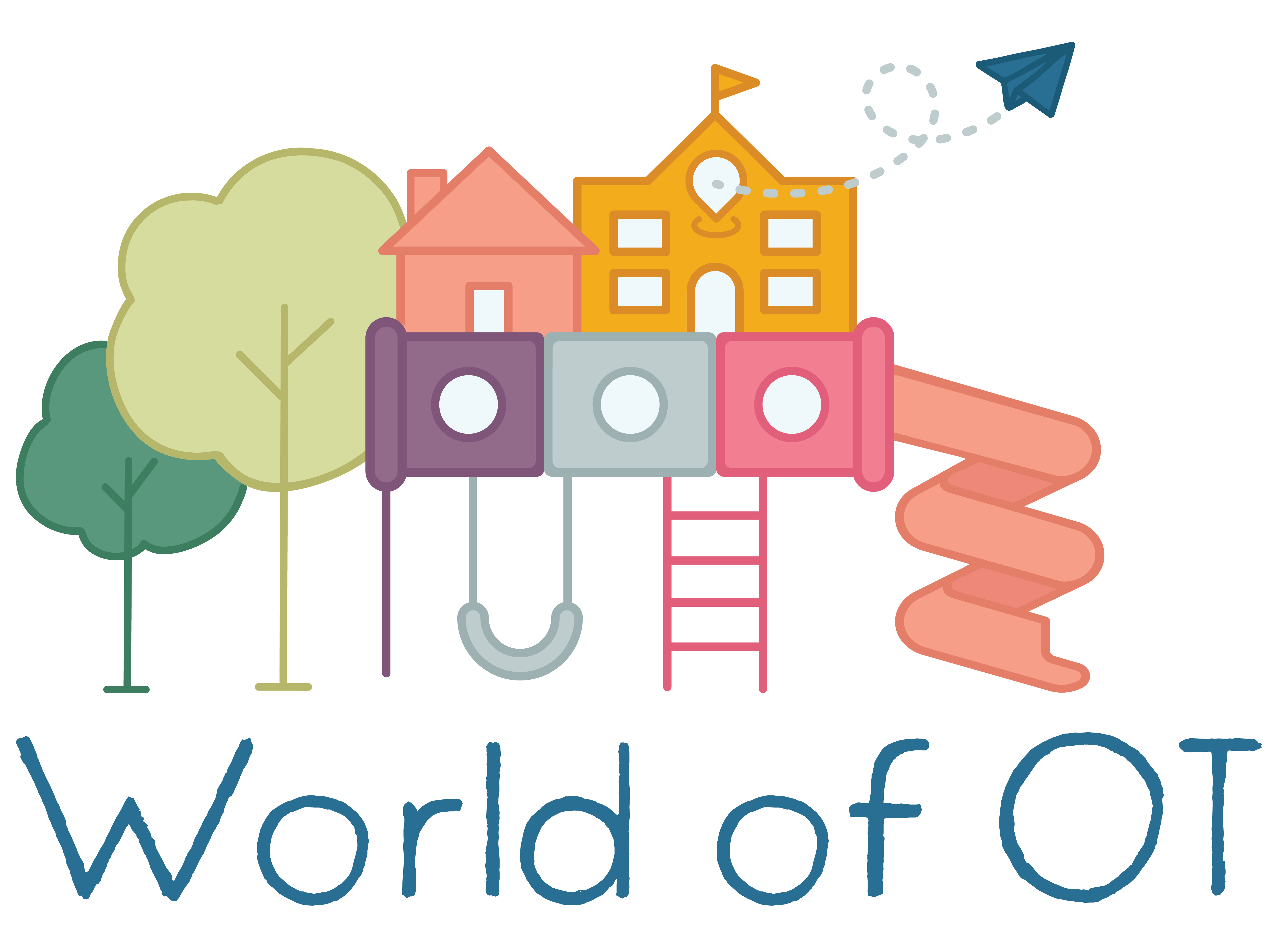
10 Oct Laws that Govern the IEP and 504 Process in Schools
 Knowing Your Role
Knowing Your Role
School is an essential part of daily living for children. Our role as related service providers in the school is to enhance a child’s ability to take on academic tasks independently while also promoting engagement in social interactions and leisure activities with peers. Being able to support a child through therapy in the school delivers improvement to functionality in daily operational tasks in the educational settings such as classrooms, play-centered activities like recess as well as participation and access to extracurricular activities within the school. After all, only when support is provided in all areas of need, is progress made and advancement seen in holistic school functioning! Here’s another mind blowing perspective: the main goal of our services isn’t to offer special education, it’s in fact to help kids benefit from general education.
Oh yeah, I see those light bulbs going off!
In IDEA’s (Individuals with Disabilities Education Act) own words:
“(4) A statement of the special education and related services and supplementary aids and services, based on peer-reviewed research to the extent practicable, to be provided to the child, or on behalf of the child, and a statement of the program modifications or supports for school personnel that will be provided to enable the child—
(i) To advance appropriately toward attaining the annual goals;
(ii) To be involved in and make progress in the general education curriculum in accordance with paragraph (a)(1) of this section, and to participate in extracurricular and other nonacademic activities; and
(iii) To be educated and participate with other children with disabilities and non disabled children in the activities described in this section;”
To continue making this impact, service providers must abide by federal and state regulations within the public school system to ensure that every child has the opportunity to receive the individualized help they deserve in order to thrive and be successful in the school setting regardless of physical or mental impairments.
 Laws and Legislation
Laws and Legislation
Our roles in the school setting are directly related to the laws that govern it and hence it is extremely important to have a good grasp of what they truly state and stand for. Educational legislation has been adjusted to meet the needs of children with disabilities in the public school system and to provide equity in the access and outcomes of education for all children. The two most important pieces of legislation to know as a school-based practitioner include:
1. Individuals with Disabilities Education Act (IDEA):
This law elevates educational standards for all children by ensuring that states and public schools provide Free Appropriate Public Education (FAPE) in their Least Restrictive Environments (LRE), side by side with their peers and emphasize Special Education (SPED) and related services to meet each child’s unique needs through Individualized Education Plans (IEP).
Before Congress passed IDEA, it was common for students with disabilities to be placed in separate schools or classrooms away from their peers, with poor quality education lacking support to thrive. Many of these restrictive settings provided only minimal food, clothing, and shelter, and persons with disabilities were often merely accommodated rather than assessed, educated, and rehabilitated. Are you starting to see why these laws were much needed?
This IDEA process includes:
- Identifying students with disabilities,
- Providing a non-restrictive, free, and appropriate educational environment,
- Developing an Individualized Education Plan (IEP), and
- Involving parents through participation and availability of due process rights.
When the team determines that the student qualifies for special education (by meeting one or more of the 13 eligibility criteria as outlined by IDEA) AND requires school-based services to access, participate and benefit from their education, IDEA assists children with disabilities with any combination of conditions that affect their educational performance and ability to learn.
IDEA defines related services offered and what they include in the schools here.
For example: IDEA defines Occupational therapy as:
“ (6) Occupational Therapy
(i) Means services provided by a qualified occupational therapist; and
(ii) Includes—
(A) Improving, developing, or restoring functions impaired or lost through illness, injury, or deprivation;
(B) Improving ability to perform tasks for independent functioning if functions are impaired or lost; and
(C) Preventing, through early intervention, initial or further impairment or loss of function.

2. Section 504 of the Rehabilitation Act of 1973
Around the same time IDEA was passed, Congress passed Section 504 of the Rehabilitation Act – which barred disability discrimination in programs that got federal funding. Section 504 of the Rehab Act requires schools to provide eligible students with disabilities free appropriate public education, The Act defines “appropriate education” as “… the provision of regular or special education and *related aids and services* that are designed to meet individual educational needs of handicapped persons as adequately as the needs of non handicapped persons are met…”
Section 504 goes on to state: “No otherwise qualified individual with a disability in the United States… shall, solely by reason of her or his disability, be excluded from the participation in, be denied the benefits of, or be subjected to discrimination under any program or activity receiving Federal financial assistance….”
Simply put, Section 504 aimed to end discrimination within the educational world (along with ADA, which was later passed to end discrimination in settings beyond education) based on disablity. Essentially, the 504 plan provides support and services for students with disabilities to meet their individual educational needs, even when they do not qualify for special education.
So while a related services provider’s methods in supporting a student on a 504 plan may differ from how they support another student who has an IEP, both students are entitled to these services and supports – consultative services, environmental modifications, recommending accommodations, and direct services too!
Here’s where things can get tricky — Section 504 and its interpretation are a little more loose, and schools do not receive funding for 504’s like they do for special education. So, it is not uncommon to hear therapists say things like ‘OTs do not provide individual services on 504 plans, it’s only for consults’ or something along those lines. This is a misinterpretation that holds no legal basis! So the next time you are prompted to answer with ‘my district does this…’ or ‘we are not allowed to do…’ etc.—dig deeper to find out if it is based on the correct interpretation of a law! Is it ethical and/or best practice? Regardless of how dry these laws might seem, it is extremely important for us to not only know about their existence but also make sure our practice is informed and ethical, strongly guided by the correct interpretation of them – are you convinced?
As you can imagine, there are additional laws governing school practice that go beyond the scope of this basic framework. Be mindful to review your state’s educational regulations, professional practice act, and your district’s education policies to help you provide services that are informed and ethical.

Conclusion
These legislative measures exist to guide and govern occupational therapy practice in schools, but we must also understand and remember why these laws were passed in the first place. All children deserve free and equal access to education, and obstacles such as physical or mental differences should not inhibit a child’s right to the same education as their peers. When we take into consideration the diversity of the youth population, it would be wrong to assume that each child will adapt to the same learning styles, curriculum structures and resources. As professionals, we often follow directions and ground rules set by employers and the same compliance should be applied with regard to state-directed policies. By truly understanding these guidelines, service providers can continue providing ethically informed services rather than ‘doing as I was told’ services.
Haven’t heard me say it enough? Here I go again – if you are an OT considering making the switch to school-based practice, it is crucial you familiarize yourself with the laws that govern our practice so that you can responsibly provide services within your scope to the students that qualify for them, backed by laws and systems to make it most efficient. And this is where a lot of the trouble happens – Who qualifies? What’s the process like? What’s it based on? How do you determine what’s within our scope? And so many more nitty gritty details and intricacies that are unique to this setting and not necessarily covered in OT school, and here is a guide on the 4 mistakes you want to avoid as a new school-based OT.
All of this (and more) is covered in my online, self paced CEU course ‘Nuts and Bolts to Becoming a Successful School-based OT’. So, if you are an OT looking for more support in this area, to practice in the schools with confidence rather than overwhelm, and you’d like access to comprehensive information pertaining to school-based OT, tried and tested templates, efficient workload management systems along with several other resources to help you hit the ground running, make sure to check it out to see if it fits the bill for you!
This blog post was originally written by the author for Pediastaff


No Comments